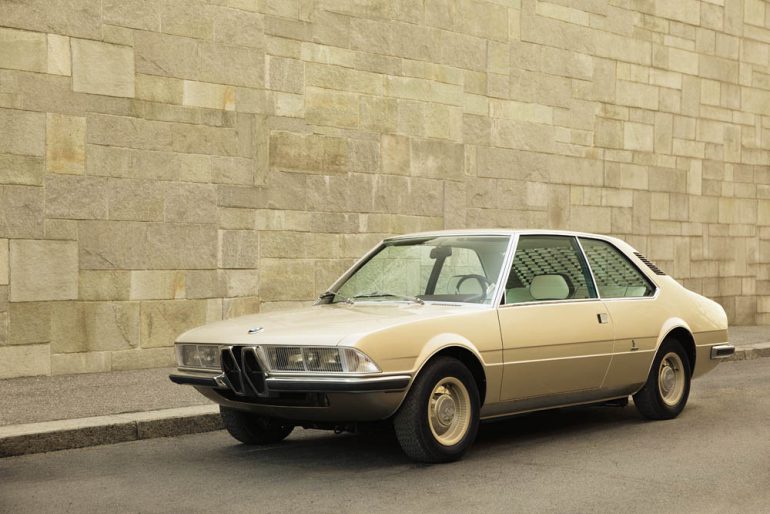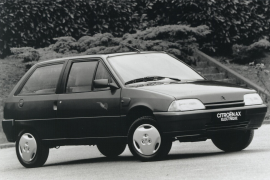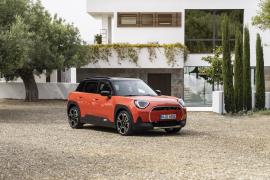AUTOMOBILE CULTURE: This car is a highlight for all automobile design fans: The BMW Garmisch. BMW honours the visionary designer Marcello Gandini.
Even if the initial impression is that the cars from Bavaria are light years away from their original models, the core of it all can be found in designers like the legendary Marcrello Gandini. It’s a journey back in time to car design in the early 70s. As a designer myself, I am passionate about cars. Especially when cars exude an atmosphere like the BMW Garmisch designed by Marcello Gandini for Bertone at the time. A line that is absolutely comprehensible on the outside. And an interior design that I would like to see again many times today. Reduced and ergonomics approached with a lot of charm. A dashboard that does not overwhelm the driver’s senses and allows him to understand everything that needs to be understood. Great! Apart from the fact that the aforementioned charm is often missing today and instead the complexity of an aircraft cockpit has taken over. With the Garmisch, everything looks a little different. Here is the story about it:
The BMW Group unveiled a new edition of the BMW Garmisch at the Concorso d’Eleganza Villa d’Este 2019. The concept car had been designed by Marcello Gandini for Bertone and disappeared without trace after its unveiling at the 1970 Geneva Motor Show. With the rebuilt coupé, BMW pays tribute to one of the most influential car designers of all time and adds an exciting chapter to its own company history.
„For me, Marcello Gandini is one of the grand masters of automotive design and his designs have always been an important source of inspiration for my work,“ says Adrian van Hooydonk, Senior Vice President of BMW Group Design. He has been fascinated by the BMW Garmisch ever since he discovered a faded photograph of the car a few years ago. „By creating the BMW Garmisch for a second time, we want to pay homage to Marcello Gandini, recall one of his lesser-known cars and shed light on Bertone’s stylistic influence on the evolution of BMW design. The opportunity alone to complete the BMW story and fill in the gaps were worth it to us to push this project forward.“
Italian design and coachbuilding culture have inspired and influenced BMW since the early days of the brand. From the BMW 328 Mille Miglia with its lightweight aluminium shell from Carrozzeria Touring to the wedge-shaped BMW M1 designed by Giorgetto Giugiaro, there has always been a lively exchange of concepts and ideas across the Alps. And like many other Italian concept cars of the 1960s and 1970s, the BMW Garmisch was developed at Bertone as an independent design proposal to demonstrate the creative potential of the studio. „The original idea came from Nuccio Bertone himself, who wanted to consolidate and expand our existing relationship with BMW with a surprising design study at the Geneva Motor Show,“ recalls Marcello Gandini, who headed Bertone’s design studio at the time.
„We wanted to develop a mid-size coupé that on the one hand remained true to BMW’s design language, but on the other hand also came across as a little more dynamic and was even a little provocative.“ While the car’s side surfaces appeared very tidy and smooth, the BMW Garmisch attracted attention with its bold, angular and vertically positioned radiator grille and rectangular, glazed headlights. Other unusual details were the air intakes in the C-pillars, which were more reminiscent of sports cars, and the honeycomb-textured sun visor on the rear window – a typical stylistic element of Marcello Gandini.
Although the car was completed in just a few months, the design team did not miss the opportunity to give the interior its own unique character as well: With its unusual radio arranged in portrait format in the centre console, a large folding mirror for the passenger and an extravagant combination of colours and materials, the BMW Garmisch varied the rather functionalist interior design preferences of the time in a Piedmontese-elegant way. According to Marcello Gandini, even the car’s model name was chosen to attract as much attention as possible. „Skiing was extremely popular in Italy at the time. And the name Garmisch conjured up dreams of winter sports and alpine elegance. By remaining as faithful as possible to the original vehicle, the new BMW Garmisch is an impressive example of BMW’s expertise in design research and prototyping. With virtually no original documents left, the interdisciplinary team of specialists convened from the BMW Group Design and BMW Classic departments had to derive every body and interior detail of the BMW Garmisch from a handful of old photographs, most of which were even only available in black and white. Marcello Gandini supported the research as a contemporary witness with his own memories of the development process. This enabled the design team to reconstruct important details such as the exterior colour – a light champagne gold metallic in the style of Italian fashion of the time – as well as the materials in the interior. And while the latest 3D modelling technology was used to specify the original structures and shapes, the BMW Garmisch was hand-built by skilled body designers in Turin – just like the original almost 50 years ago.
„When I heard that the BMW Garmisch was to be built again, I was a little surprised at first,“ recalls Marcello Gandini of his first meeting with Adrian van Hooydonk, who visited him in Turin in the summer of 2018 to obtain the author’s blessing. „Now I am very happy that I could be part of this project and that BMW decided to revisit this joyful time. After seeing the finished car, I find it hard to distinguish it from the original.“







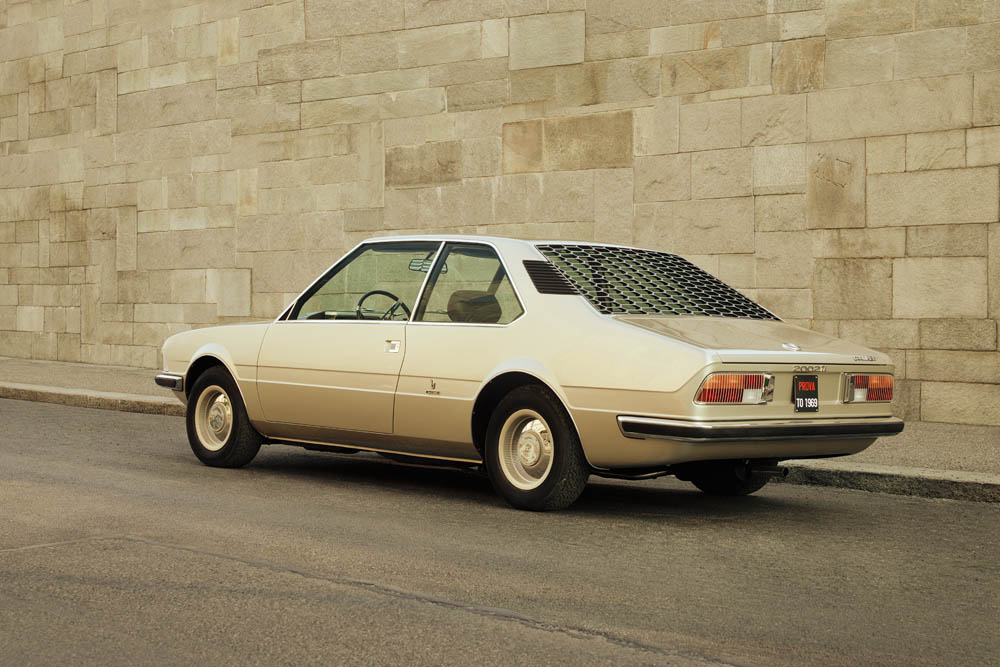








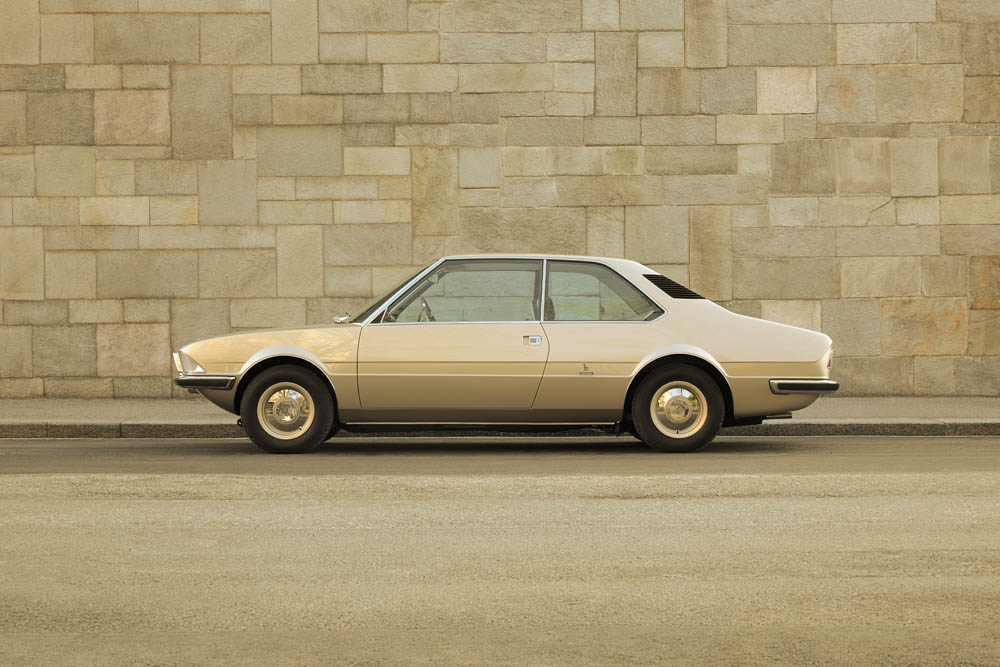



With its reduced design language, precisely drawn lines and clear geometric forms, the BMW Garmisch is an archetype of that radical new style developed by Italian studios such as Bertone, Italdesign and Pininfarina in the late 1960s and early 1970s – and which remains an important reference point for automotive designers to this day. As an ambassador of a forward-looking understanding of design, the BMW Garmisch is now also intended to inspire contemporary designers to continually question and reinvent the forms of the automobile. „At the Concorso d’Eleganza Villa d’Este we reflect on the past, but we also think about the future,“ says Adrian van Hooydonk. „Marcello Gandini’s designs were always very clear and simple, yet also very dramatic. That’s why I find his work so inspiring. He has always created something spectacular with just a few design elements. I still consider this approach of achieving a lot with simple means to be extremely modern.“
Marcello Gandini was born in 1938 and is considered one of the most influential automotive designers of the 20th century. During the 15 years he headed Bertone’s design studio in Turin, he designed some of the most daring and revolutionary automobiles of the era – including sharp-edged concept studies such as the Lancia Stratos Zero or the Alfa Romeo Carabo. The sports car icons he created, such as the Lamborghini Miura, are coveted by collectors today and celebrated at concours events around the world. In addition to the BMW Garmisch, Marcello Gandini and his design team at Bertone were also involved in the development of the BMW Spicup and the first generation of the BMW 5 Series, which was created under the direction of former BMW design chief Paul Bracq.
Author: Michael Hiller virtualdesignmagazine
Brand: BMW AG
Photos: BMW AG
If you like our magazine and would like to be kept up to date with the latest articles, simply follow us at

